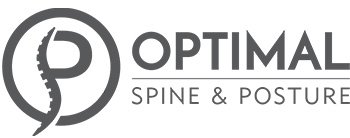What Causes Scoliosis?
That is a question I am frequently asked. That is one of the questions that lead me to begin learning about and then eventually treating scoliosis. Scoliosis can have many different causes including those known as structural-scoliosis (true scoliosis) and involves rotation and twisting of the spine along with lateral bending. Nonstructural scoliosis are caused by a short leg, antalgic position (position caused by pain), or abnormal posture and do not involve rotation of the spine.
Structural scoliosis can be divided into three categories according to cause:
- Congenital scoliosis is caused by a structural abnormality or misshaped segment or segments of the spine such as a wedged (butterfly) vertebra.
- Neuromuscular scoliosis is secondary to a neurological conditions such as trauma to the spinal cord, a spinal cord tumor or other motor neuron lesion and disorders such as cerebral palsy.
- Idiopathic scoliosis is when no known cause of scoliosis can be determined. This the most common type of scoliosis.
Idiopathic Scoliosis
Idiopathic scoliosis is further broken down according to age.
- Infantile Scoliosis (0-3 years)
- Juvenile (3-10 years)
- Adolescent (10 years – skeletal maturity)
- Adult-onset (First detected or developed in adulthood)
What makes idiopathic scoliosis different than other forms of scoliosis is it generally has significant rotation along with lateral bending of the spine.
Antalgic Scoliosis
Abnormal spinal alignments can occurs as an adaption to someone being in acute pain. If someone is standing abnormally to compensate for the pain, the abnormal alignment will often reside and normal alignment will return once the pain resides.
Scoliosis Caused By A Short Leg or Pelvic Tilt
Scoliosis caused by an anatomical short leg or a misshapen pelvis is easily detected on x-ray evaluation. A short leg will often also cause a shift in the thoracic spine away from the midline and towards the side of the short leg. This scoliosis will partially correct by placing a proper lift under the short leg but rehab to correct soft tissue change will need to be done.
Posture Pseudo-Scoliosis
Scoliosis caused by abnormal posture patterns is called pseudo-scoliosis (fake) because it is not true scoliosis, however it may appear very similar to true scoliosis. Postural misalignments such at lateral shifts, lateral bending and rotations of the trunk of the spine will appear very similar to true scoliosis on an x-ray and need to be evaluated by a professional highly trained in posture and scoliosis correction to ensure an appropriate treatment is rendered.
Adult Onset Scoliosis
Progressive scoliosis can often develop in adulthood and is call adult-onset or degenerative scoliosis. Degenerative scoliosis is frequently painful and typically continues to progress if not properly treated. Some studies show on average, individuals 50 years and older with degenerative scoliosis will progress 1-3 deg per year.
Will Scoliosis Progress?
There are many factors that play into the likelihood of scoliosis progressing. The age of detection is one the largest factors. If scoliosis is detected while a child is still growing it needs to be strictly monitored and non-invasive intervention needs to be done if the scoliosis is greater than 15 degrees. Scoliosis can increase very rapidly as a child goes through growth spurts. “Watchful waiting” does not apply in children with scoliosis greater than 15 degrees. It was once believed that scoliosis progression stops post puberty, however scoliosis has been shown to continue to progress in adulthood particularly in curves greater than 30 degrees. Adult degenerative scoliosis greater than 50 degrees will on average progress 1-3 deg per year. Gender can play a roll, as girls tend to have greater curve progression than boys.
If you believe you or someone you know may have scoliosis it’s best to get examined by a professional that specializes in scoliosis so you can get the most appropriate treatment. If you live in Boise, Garden City, Meridian, or Eagle please give us a call at 208-748-5909 and ask for a free consultation.
Further reading to learn more about Scoliosis Treatment at Optimal Spine & Posture in Boise, ID:
Scoliosis Treatment
Scoliosis Bracing
Intensive Scoliosis Treatment
Scoliosis Rehabilitation & Exercise




